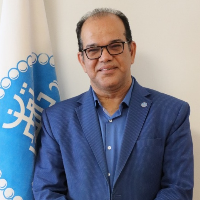Measuring the Sustainability of Rural Areas Using Analytical Network Process (ANP)Case-study: Rural Areas of Fasa County
Author(s):
Abstract:
Introduction
As pervasive as the term may be in our discourse, “sustainability” is far from having a clear, distinct, or wholly accepted meaning in contemporary development circles (preto, 1996). “Sustainability” is increasingly cited as an explicit goal of development efforts and remains a widely-touted global concern in spite of the fact that it is an inherently “complex and contested concept … [For which] precise and absolute definitions … are impossible”. The foundations of international development were laid after the end of World War II with the goals of alleviating poverty, reducing inequality, and improving the global standards of living. In 1987, the UNmandated World Commission on Environment and Development (the Brandt land Commission) responded to an emerging recognition that the human economy was stressing global ecosystems. The Commission affirmed the importance of which “extend to all the opportunity to fulfill their aspirations for a better life.” At the same time, it emphasized that this development must be “within the bounds of the ecologically possible,” They called for sustainable development “that meets the needs of the present without compromising the ability of future generations to meet their own needs”. An action plan for sustainable development, called Agenda21, was launched in 1992 at Rios Earth Summit (World Summit on Environment and development Goals, adopted in 2000, called on all countries to integrate the principle of sustainable development into national policies and programs. These indicators must not only reflect the changes in quality of life, but must also show if these changes are compatible with the current plans in ecological limits. While a precise and complete definition of sustainability may be elusive, it is possible to define measurable bottomline conditions for both human developments (Social, Economic) and ecological sustainability.Methodology
While specific context, goals and methods of any program will vary widely (and so will the criteria for evaluation), we can fundamentally compare any sustainable development diminution based upon criteria that describe the type of approach taken. We examine and measure sustainable evelopment in terms of its three dimensions: environmental, social, and economical. Decisions leading to sustainable development ought to be based on science and adequate information. Thus, data are needed on environmental, social, and economical factors of sustainability. Recently, Analytical Network Process has been proposed as a systematic tool for the assessment of sustainability. Based on this approach, we have developed a model called sustainability assessment through Analytical Network Process (ANP) evaluation, which uses basic indicators of environmental, economic and social as inputs, and employs ANP to provide sustainability measuring on the local rural Fasa county, Fars province. This paper provides an approach to sustainable decision- making on local level using ANP model. In this research, the index of each dimension of sustainability has been used by measuring of rural areas. For this aim, the hypothesis is that there is a meaningful relationship among sustainability dimensions (social, economic, ecological aspects).The methodology of this article is descriptive-analytic using Borda technique on 250 family and 46 villages in Fasa county. For this purpose, after calculating the weights using Borda method, the differences are stated by sustainability dimensions of rural areas. Results And Discussion
The design and development of sustainable development approaches is dependent upon identification and development of an appropriate information infrastructure to support decisionmaking. The findings of this research show that because of the relationship among indexes and criteria in different dimensions for measuring, exact sustainability is needed for the groups and different sustainability dimensions. They should be paid attention to independently and there should be polls to hear the experts’ recommendations. The collective decision-making employing Borda method, compression questionnaires and compounding the data in the ANP model improve their efficiency in comparison with the other methods.Keywords:
Language:
Persian
Published:
Human Geography Research Quarterly, Volume:42 Issue: 72, 2010
Page:
135
magiran.com/p792781
دانلود و مطالعه متن این مقاله با یکی از روشهای زیر امکان پذیر است:
اشتراک شخصی
با عضویت و پرداخت آنلاین حق اشتراک یکساله به مبلغ 1,390,000ريال میتوانید 70 عنوان مطلب دانلود کنید!
اشتراک سازمانی
به کتابخانه دانشگاه یا محل کار خود پیشنهاد کنید تا اشتراک سازمانی این پایگاه را برای دسترسی نامحدود همه کاربران به متن مطالب تهیه نمایند!
توجه!
- حق عضویت دریافتی صرف حمایت از نشریات عضو و نگهداری، تکمیل و توسعه مگیران میشود.
- پرداخت حق اشتراک و دانلود مقالات اجازه بازنشر آن در سایر رسانههای چاپی و دیجیتال را به کاربر نمیدهد.
In order to view content subscription is required
Personal subscription
Subscribe magiran.com for 70 € euros via PayPal and download 70 articles during a year.
Organization subscription
Please contact us to subscribe your university or library for unlimited access!




